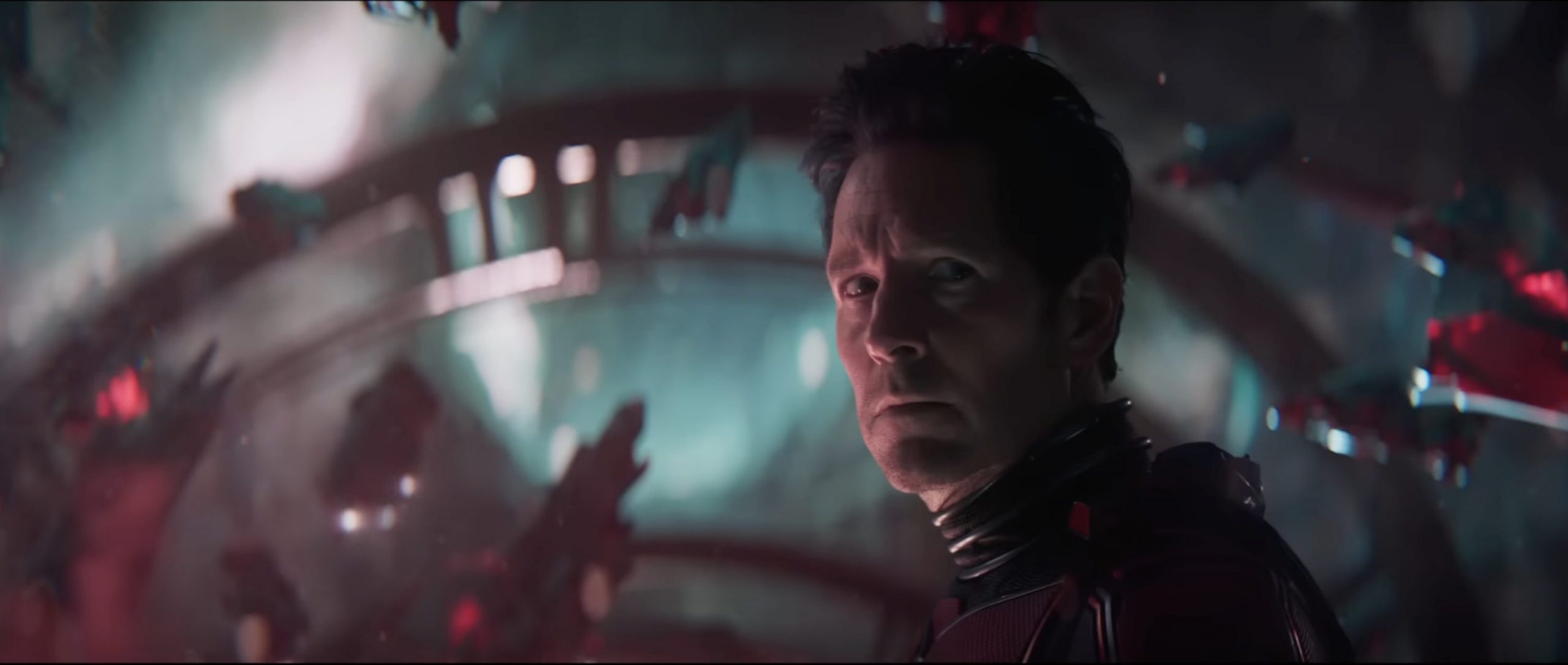Marvel Studios are in trouble. Middling reviews, over-saturation, and tedious one-liners have caused casual and long-term fans to voice their distaste for Marvel films and tv shows in the past year. And the most recent release Ant-Man and the Wasp: Quantumania does not seem to have had the desired impact.
Late last year, the fourth instalment of Chris Hemsworth’s Thor franchise thundered into cinemas but was received quite poorly. Following suit, it seems as if Thor’s ant-sized ally can expect similar treatment.
Ant-Man and the Wasp: Quantumania is the third film in the Ant-Man series and follows Scott Lang (Paul Rudd) and Hope Pym (Evangeline Lily) as they venture into the ‘Quantum Realm’, a sub-atomic alien-like world.
In the previous instalment, viewers might remember Michelle Pfeiffer’s Janet Van Dyne being rescued from the Quantum Realm but as it is revealed early on in Quantumania, she was not alone there; it is teeming with life, vibrant cities, and a formidable threat in Kang, played by Jonathan Majors.
Much of the film takes place in the Quantum Realm, and as a result; involves lots of computer-generated landscapes and characters.
The quality of CGI in Marvel films has been a point of scrutiny of late, with the studio being accused of overworking visual effects artists and several of them saying they are the worst studio to work under. This is reflected again in the quality of VFX work in this film.
From the first sequence in the Quantum Realm, the visuals are overwhelming in the worst way possible; nothing is tangible to the audience and the background green screen volume leaves the actors disconnected from the setting.
Comparing this with current properties such as The Mandalorian, a sci-fi show with a budget of around $10-$15 million per episode and considering the standard budget of a marvel film being $200 million, Quantumania should not look this amateur.
The higher-ups at Marvel Studios are most likely to blame here and not the creatives themselves. Either way, the look of this film is harsh on the viewer, with many fans taking to Twitter to compare the film’s aesthetic to that of Spy Kids.
The film’s greatest strength is the performance by Jonathan Majors as Kang, a character set to appear in the next arc of Marvel films.
With an understated approach to dialogue, Majors uses a formulated and commanding tone to embody Kang, a calm presence indicating his control over every situation. Accompanying this with rare outbursts of anger leaves the audience anticipating more in the future from not only Kang as a character, but also from the relative newcomer Jonathan Majors.
The other performances show nothing of note – Michael Douglas returns as Hank Pym, and Kathryn Newton plays Cassie (the third person to do so in four appearances of the character).
At the time of publishing, Ant-Man and The Wasp: Quantumania has a 54% Rotten Tomatoes critics rating based on 138 reviews. Only Eternals has a worse score at 47%. pic.twitter.com/KsPjxi3DPi
— IGN (@IGN) February 15, 2023
The film leaves its most sour aftertaste in its writing. Even outside the eye-rolling one-liners, a staple in all Marvel films, the film has very little development of its characters.
Early on in the film, a few conversation points about protesting and the idea of “just because it’s not happening to you, doesn’t mean it’s not happening” come up between Scott and his daughter, Cassie, with the latter taking the side of the protestors against her father.
Later in the first act, a village is under attack and with little hesitation, Scott joins in to save the village. The set-up of having the character grow to accept his daughter’s viewpoint is nowhere to be seen and is completely resolved in the first act with this one action.
By the end of its runtime, not one character has developed in any way to leave the audience satisfied; the relationships are no stronger or more believable come the end of the film as they were at the start.
Ultimately, the action set pieces of the film still aren’t enough to warrant a recommendation or a re-watch; in a sub-atomic realm, the ability to shrink and grow seems insignificant when the only things for scale are alien-like objects of which we have no familiarity.
Perhaps if this had been released eight years ago its reception would not have been as damning as it has been now. Thor: Ragnarok also utilised vibrant settings with exotic characters to its benefit, a much better-looking film coming up to six years since its release.
But as of 2023, people are tired of the so-called ‘Marvel formula’. Lacking originality, a heavy reliance on digital sets and little to no character development is slowly becoming the norm with Marvel entries – sadly Ant-Man and the Wasp: Quantumania is no exception.
Image credits: Marvel Entertainment on YouTube

